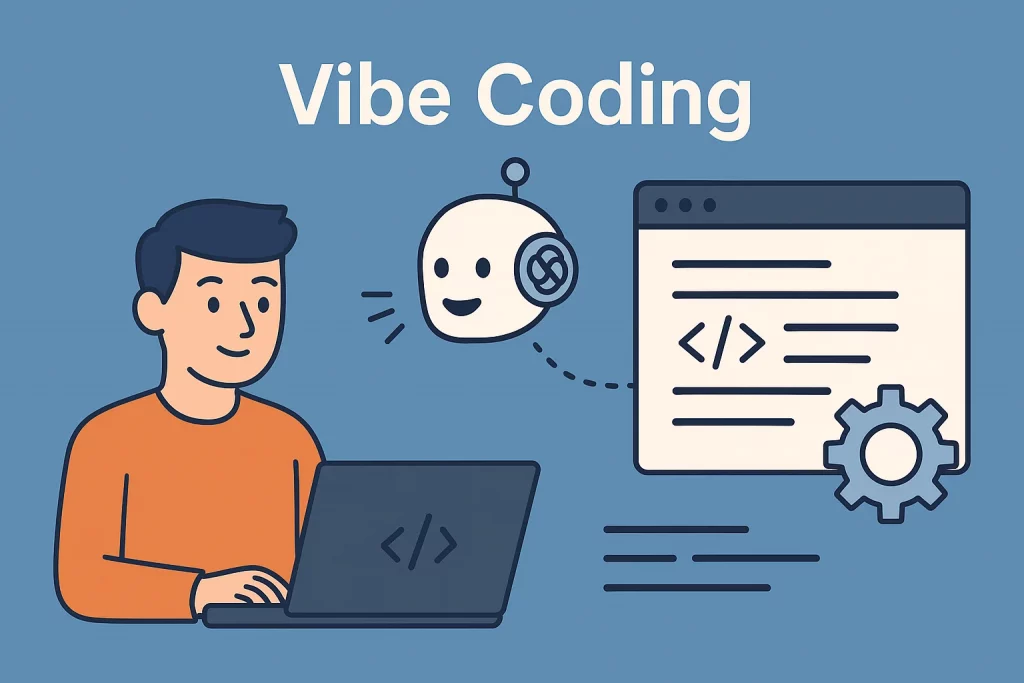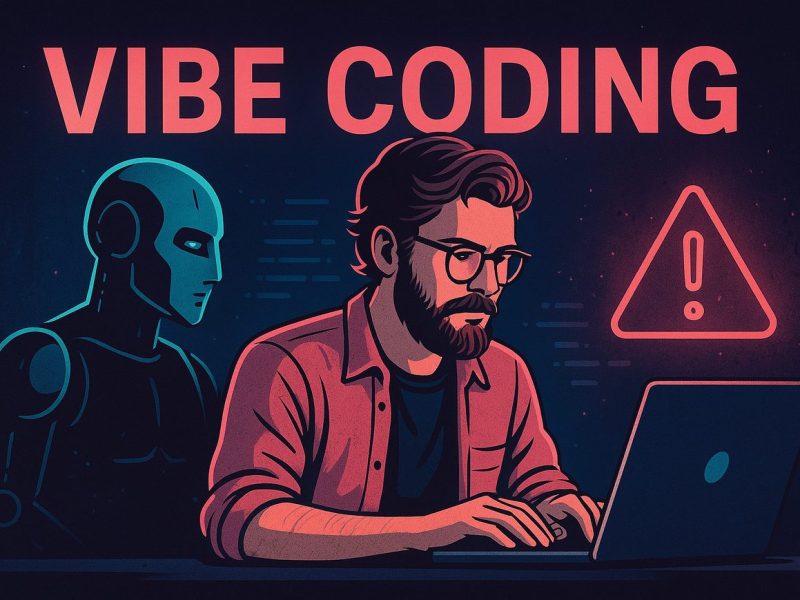The Paradigm Shift from Writing Code to Describing Outcomes
For two decades, I’ve witnessed seismic shifts in development practices—from waterfall to Agile, monolithic architectures to microservices, and manual deployments to CI/CD. But Vibe Coding (or prompt-driven development) isn’t just another trend; it’s a fundamental reimagining of how software is created. Forget syntax memorization; here, you describe what you need in natural language, and AI generates the code. Let’s dissect how this works.
Traditional Programming vs. Vibe Coding: A Core Paradigm Shift
| Aspect | Traditional Programming | Vibe Coding |
|---|---|---|
| Code Creation | Manual writing | AI-generated from prompts |
| Developer Role | Architect/Implementer | “Prompter” & Refiner |
| Expertise Required | Syntax/framework mastery | Outcome understanding |
| Debugging | Manual analysis | AI-driven fixes via prompts |
Why This Matters:
Traditional programming centers on implementation precision—every semicolon, function, and import must be manually crafted. Vibe Coding shifts focus to problem articulation. Your expertise isn’t measured by memorizing Python list comprehensions, but by how clearly you can describe tasks like:
“Create a Rust microservice that processes Stripe payments, queues failures in Redis, and retries every 5 minutes.”
Tools like GitHub Copilot X (copilot.github.com) use large language models (LLMs) trained on public codebases (e.g., GitHub’s 175B+ tokens dataset) to map natural language to executable code. This isn’t magic—it’s machine learning pattern recognition at scale.
The Vibe Coding Workflow: A Step-by-Step Breakdown
1. Prompt Input: The Art of Task Specification
Your prompt is the blueprint. Vague commands fail; specificity wins. Example:
❌ “Make a weather app.”
✅ “Create a Python function using the OpenWeather API that fetches current temperature by city, handles 429 errors with exponential backoff, and caches responses for 10 minutes.”
Why it works: Modern LLMs like Claude 3 (claude.ai) or GPT-4 (openai.com) use transformer architectures that tokenize prompts, cross-reference training data (e.g., Stack Overflow, GitHub), and predict contextually relevant code.
2. AI Code Generation: From Prompt to Production-Ready Output
Tools generate structured code by:
Parsing your prompt’s intent
Retrieving context (e.g., your open files in VS Code)
Synthesizing syntax from learned patterns
For example, Replit Agent (replit.com) builds full-stack apps from single prompts:
“Create a React/Tailwind dashboard showing real-time cryptocurrency prices using CoinGecko’s API.”
It scaffolds components, API hooks, and UI layouts autonomously.
3. Execution & Testing: Validation in Seconds
Run generated code immediately in integrated environments:
Claude CodeSandbox (claude.ai/codesandbox) deploys full-stack apps to sandboxed cloud containers
Cursor.sh (cursor.sh) executes Python/Node.js directly in its AI-powered VS Code fork
Test failures? Use AI debugging:
Prompt: “The Flask API returns 500 when the database is offline. Add retry logic with SQLAlchemy.”
4. Feedback Loop: Iterative Refinement via Prompts
Refine code by iterating on prompts:
“Add JWT authentication to the endpoint”
“Optimize this SQL query for pagination”
“Convert this to TypeScript with interfaces”
Continue.dev (continue.dev)—an open-source IDE agent—automates this by applying chain-of-thought reasoning to refactor code based on chat instructions.
The Vibe Coding Toolbox: AI-Powered Essentials
| Tool | Functionality | Link |
|---|---|---|
| Cursor | VS Code variant; edits code via chat | cursor.sh |
| Replit Agent | Builds full apps from descriptions | replit.com |
| GitHub Copilot X | Code suggestions + CLI command generation | copilot.github.com |
| Claude CodeSandbox | Generates & deploys full-stack apps | claude.ai/codesandbox |
| Gemini Code Assist | Scaffolds projects (e.g., “Build a Flask API”) | cloud.google.com |
| Mintlify Writer | Auto-generates documentation from code | mintlify.com |
| Continue.dev | Open-source agent for refactoring/debugging | continue.dev |
Deep Dive: How These Tools Leverage AI
Cursor uses GPT-4-Turbo to analyze your entire project context—not just open files—to suggest edits.
Gemini Code Assist (research) combines code LLMs with Google’s knowledge graph to recommend best-practice libraries (e.g., “Use FastAPI instead of Flask for async endpoints”).
Mintlify employs NLP to turn code structures into human-readable docs (e.g., auto-describing React props).
The New Developer Skill Set: From Syntax to Semantics
Vibe Coding demands mastery in three areas:
Prompt Engineering:
Use the BASIC framework: Background, Action, Specifics, Intent, Constraints.
Example: *”Background: Node.js app. Action: Add rate limiting. Specifics: 100 requests/IP/hour. Intent: Prevent DDoS. Constraints: Use Redis.”*
AI Refinement:
Treat AI as an intern—verify its output. Tools like CodeQL (github.com/github/codeql) scan AI-generated code for security flaws.
Domain-Driven Articulation:
The clearer your understanding of the problem (e.g., “This function must comply with HIPAA”), the better AI executes.
Challenges and Ethical Pitfalls
Over-Reliance Risk: AI can hallucinate incorrect code. Always test!
Security: Generated code may include vulnerable dependencies. Use Snyk (snyk.io) for scanning.
IP Concerns: Who owns AI-generated code? Legal precedents are evolving (Electronic Frontier Foundation).
The Future: Where Vibe Coding Is Headed
Self-Healing Systems: AI agents that auto-patch bugs detected in production (see Arize AI (arize.com) for monitoring).
No-Code Synergy: Tools like Retool (retool.com) will integrate Vibe Coding for UI generation.
Enterprise Adoption: Gartner predicts 60% of software will be AI-augmented by 2027 (Gartner, 2023).
Final Thoughts: Embrace the Shift
Vibe Coding isn’t replacing developers—it’s elevating us. By offloading syntax to AI, we focus on creative problem-solving, architecture, and innovation. Start small: use GitHub Copilot for boilerplate code, then graduate to building full features with Claude CodeSandbox. The future belongs to those who describe outcomes, not just write instructions.
“The best code is no code at all. The next best? Code that writes itself.”
— Adapted from David Wheeler
Further Reading:


